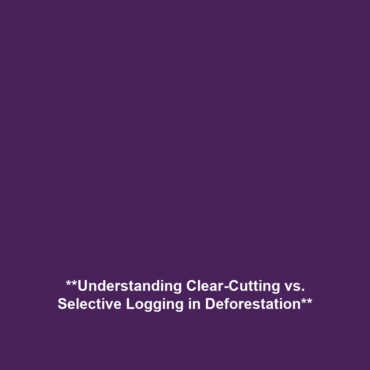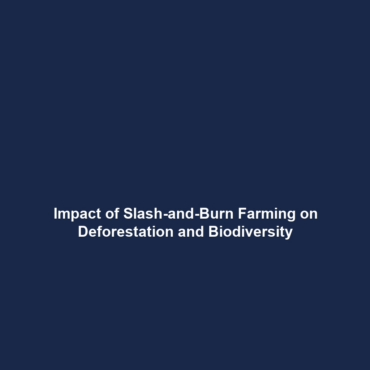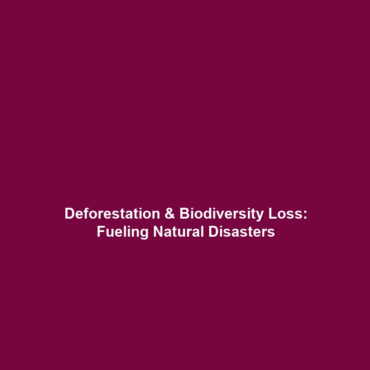Types of Deforestation: Clear-Cutting and Selective Logging
Introduction: Deforestation is one of the most significant environmental challenges today, leading to alarming biodiversity loss worldwide. The two primary types of deforestation—clear-cutting and selective logging—represent different approaches to forest management that have profound implications for ecosystems. Clear-cutting, which involves the complete removal of trees in a designated area, contrasts sharply with selective logging, where only specific trees are harvested. Understanding these methods is critical for developing sustainable practices and policies to combat deforestation and biodiversity loss.
Key Concepts
Both clear-cutting and selective logging are essential techniques in the field of forestry, yet they cater to different objectives and outcomes.
Clear-Cutting
Clear-cutting entails the total removal of all trees from a specific area, transforming the landscape dramatically. While this method is often economically advantageous for timber production, it poses serious risks to local ecosystems, including:
- Loss of habitat for various species
- Increased soil erosion
- Disruption of the water cycle
Selective Logging
In contrast, selective logging involves removing particular trees based on criteria such as size, species, or health of the tree. This method is typically perceived as more sustainable, promoting biodiversity and maintaining ecological balance. However, it requires careful planning and management to minimize negative impacts.
Applications and Real-World Uses
The application of these deforestation methods has profound implications for the forest industry and biodiversity.
For example:
- How clear-cutting is used in forest management: Clear-cutting is often employed to optimize the timber yield on commercially valuable plots.
- Applications of selective logging in conservation: Selective logging can serve as a tool for promoting forest regeneration and preserving wildlife habitats.
Current Challenges
Studying or applying clear-cutting and selective logging methods presents several challenges, including:
- Challenges of clear-cutting: The long-term ecological consequences can be difficult to measure and predict.
- Issues in selective logging: It requires extensive forest management strategies that can be economically prohibitive.
- Regulatory hurdles: There are often complex legal and social issues involved in implementing these practices sustainably.
Future Research and Innovations
Researchers are exploring innovative technologies and methodologies to enhance sustainable forestry practices. Some of these include:
- Use of drones for forest monitoring and management
- Development of advanced computer models for predicting ecological impacts
- Genetic engineering of tree species to enhance growth rates and disease resistance
Conclusion
The examination of types of deforestation, namely clear-cutting and selective logging, reveals critical insights into their significance concerning deforestation and biodiversity loss. As we navigate the challenges and opportunities provided by these methods, it is imperative to advocate for sustainable practices that protect our forests. To learn more about related topics, explore our articles on biodiversity conservation and sustainable forestry practices.


